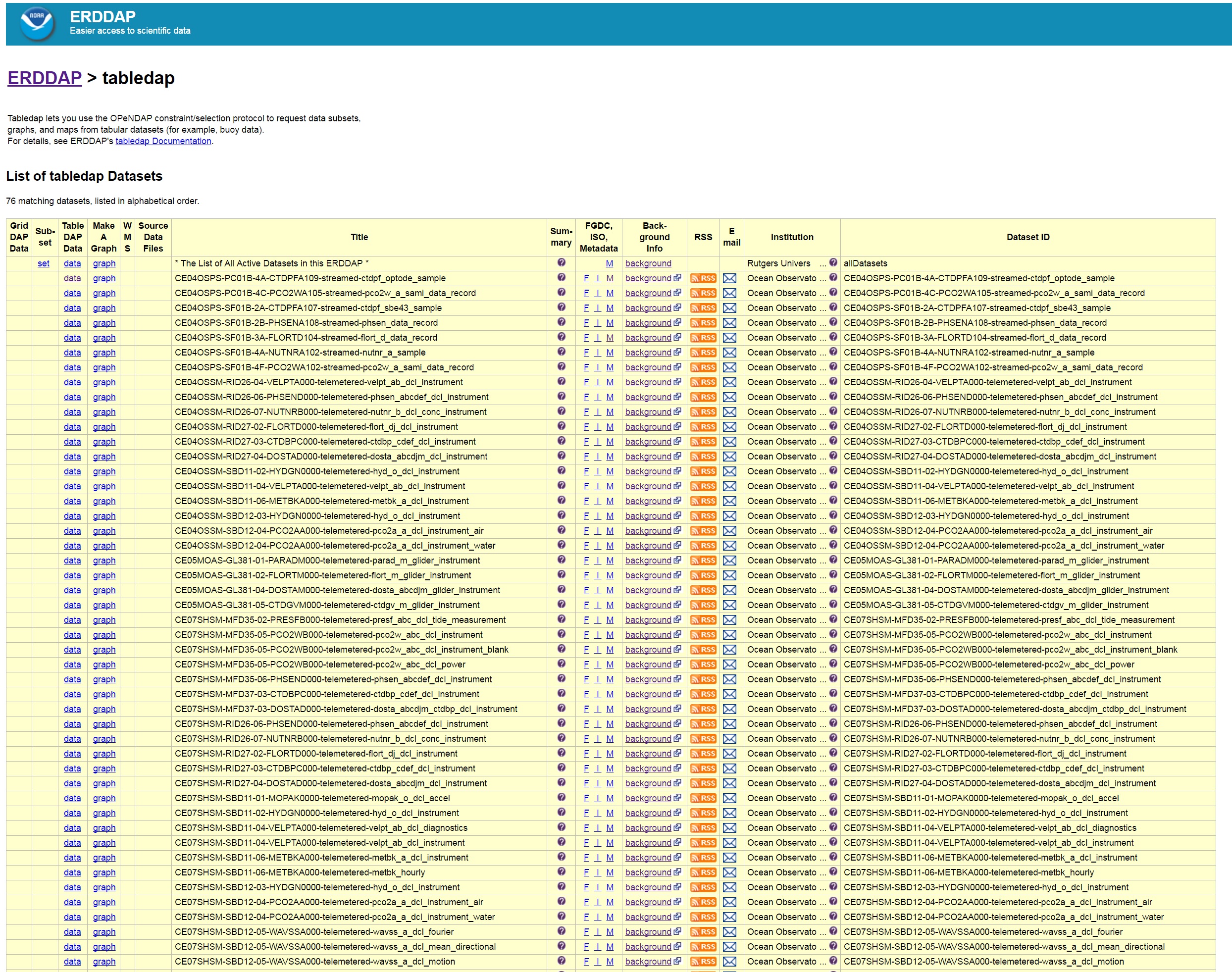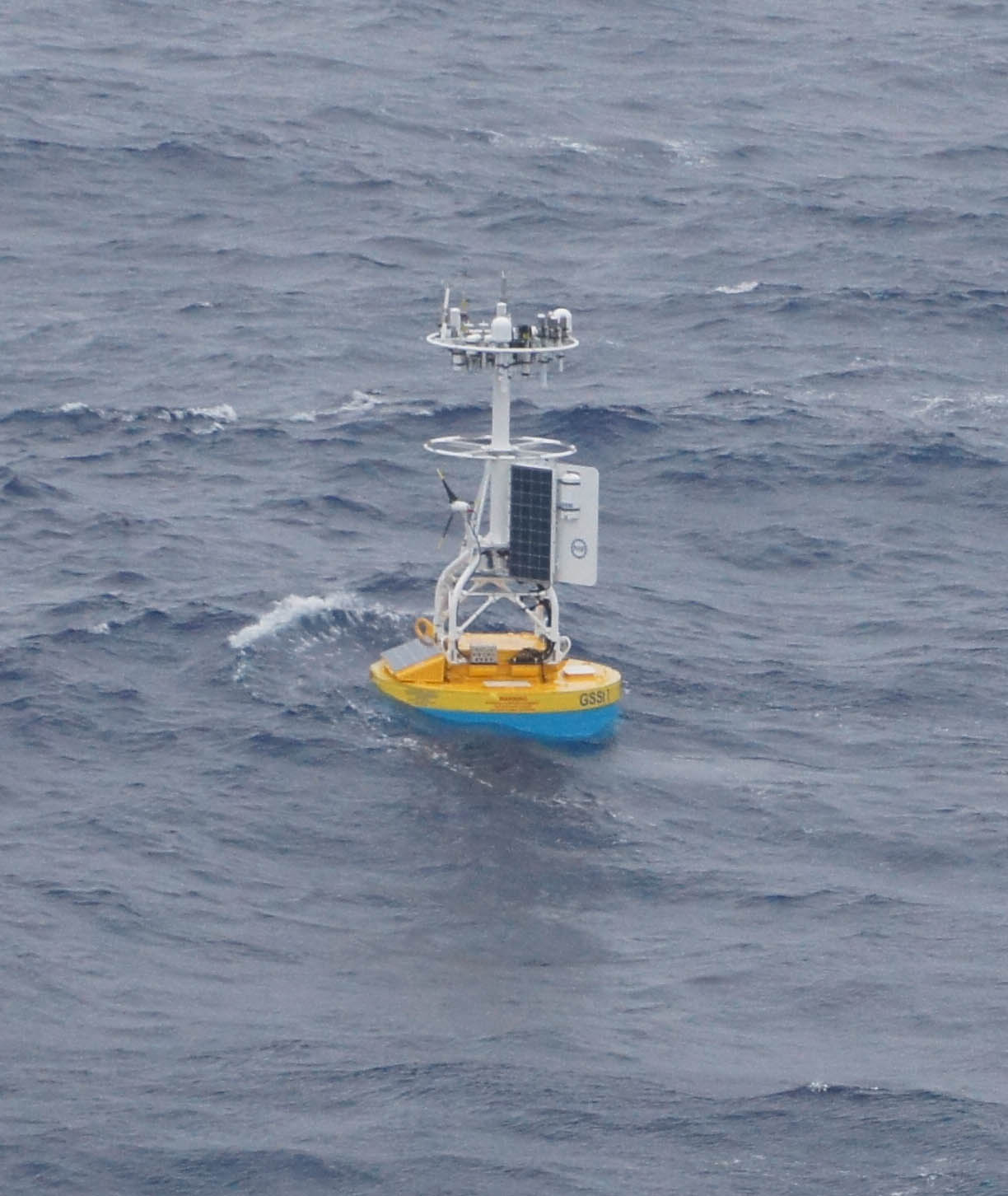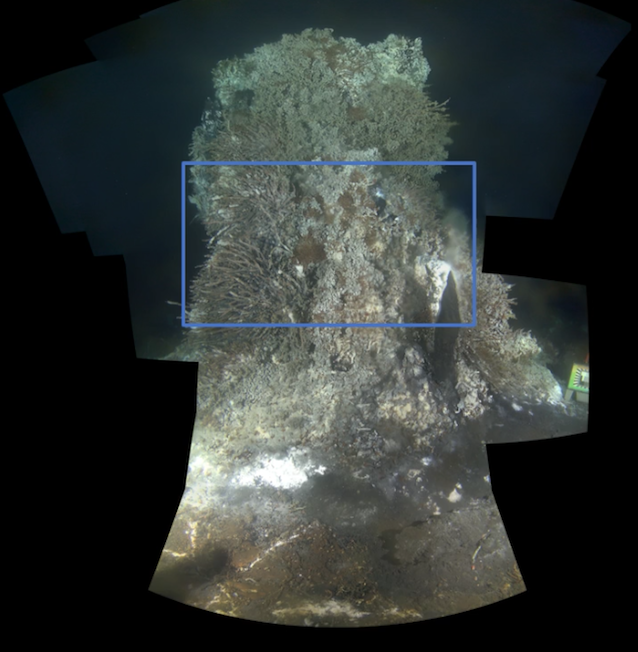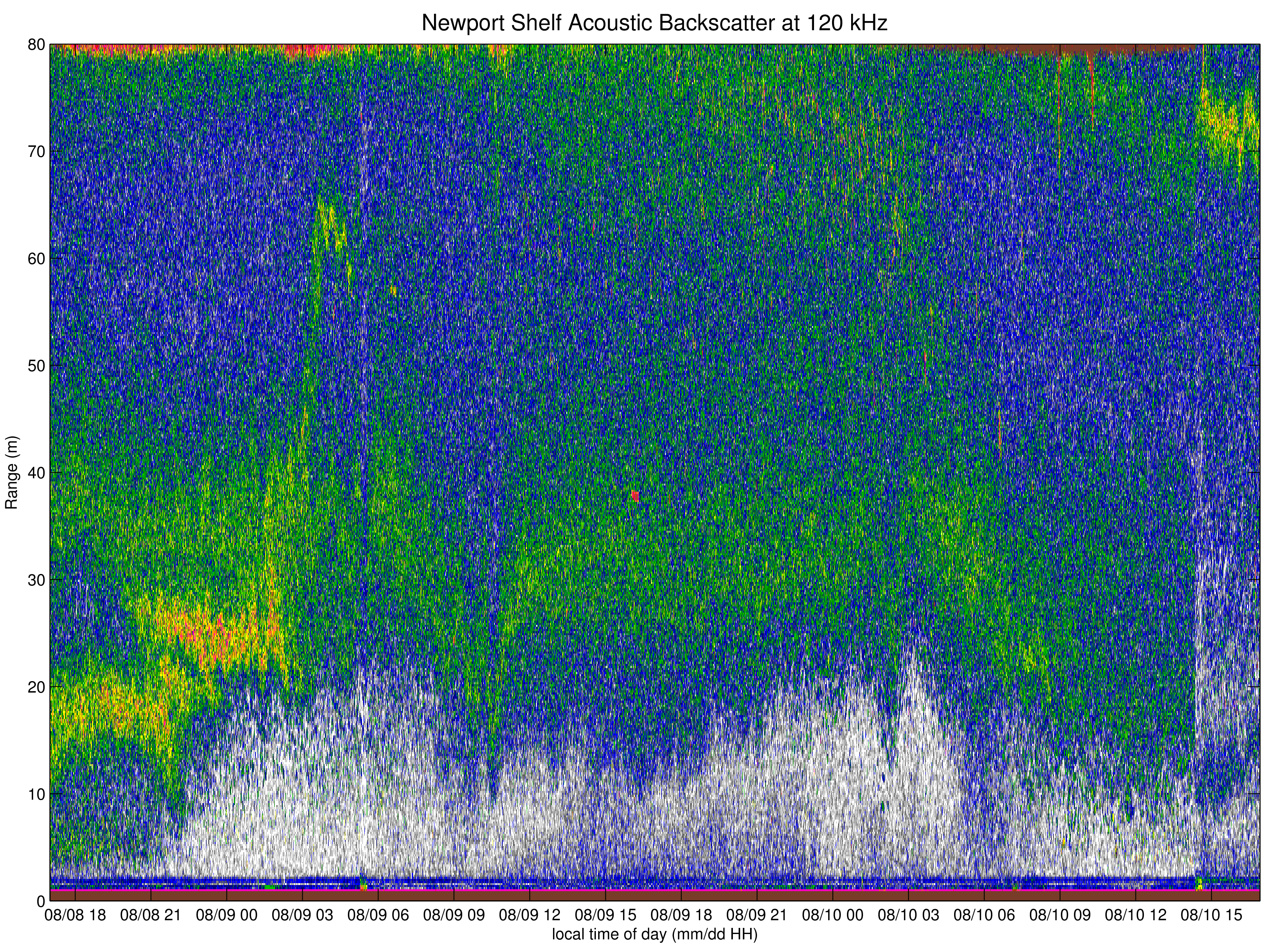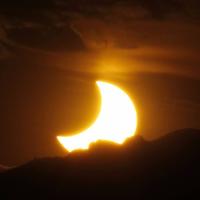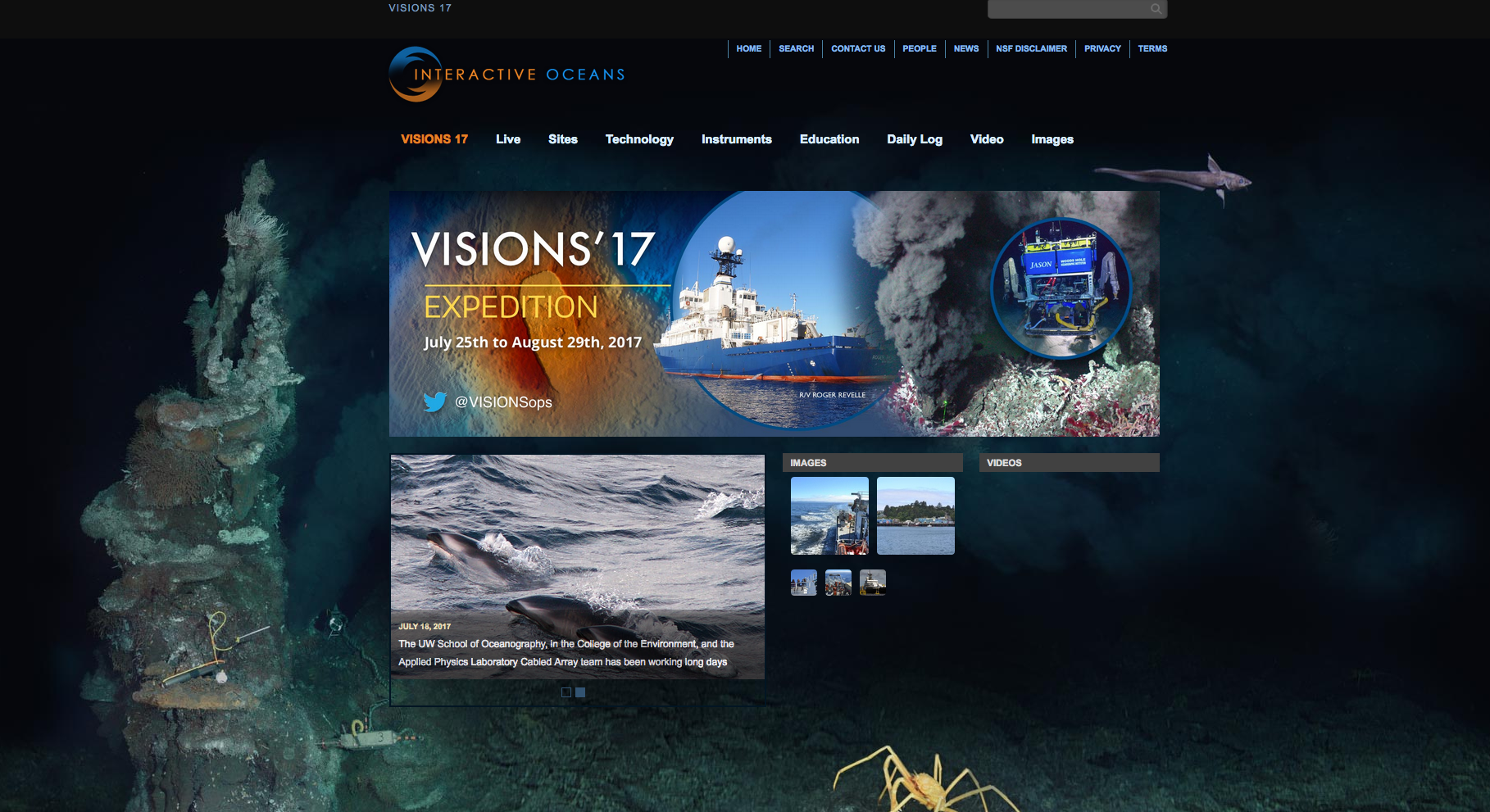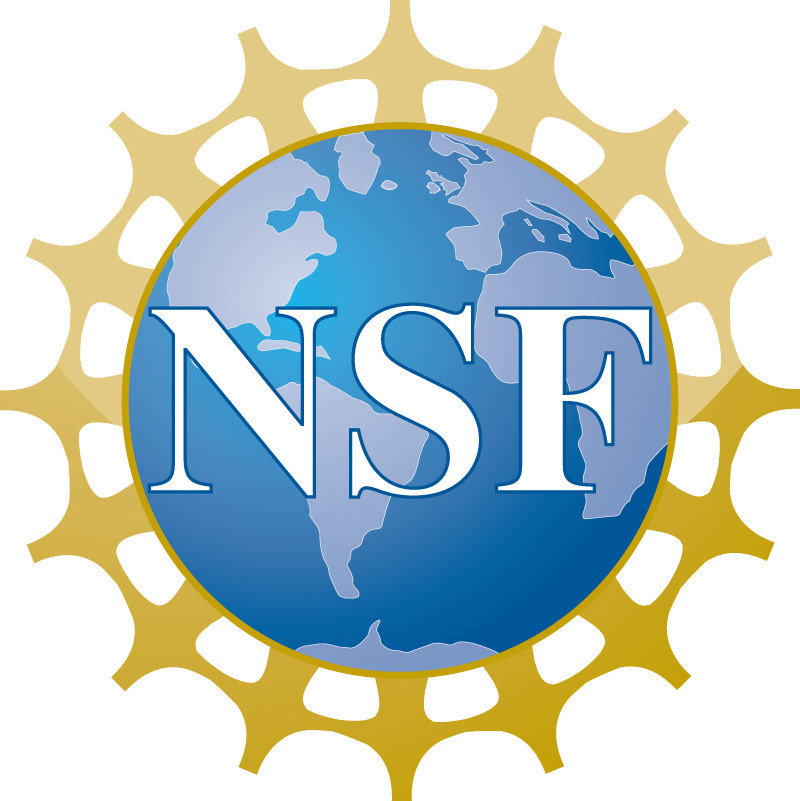Posts by Leslie Smith
Senior Program Specialist, Ocean Observatories Initiative
The Consortium for Ocean Leadership is seeking a Senior Program Specialist. This is a temporary, full-time position scheduled to last through September 30, 2018, with the possibility of extension pending funding availability. The position will report to the Vice President, Research and Education.
Read MoreOOI ERDDAP Server Now Online
The OOI ERDDAP server is now online hosting uncabled, telemetered data from OOI moorings and gliders.
Read MoreOOI Southern Ocean Array (55S, 90W) provides critical weather forecast data
Data from the OOI Southern Ocean Array Surface Mooring have been integrated into the World Meteorological Organization’s Global Telecommunication System, making these data more easily accessible for weather forecasters and modelers.
Read MoreNew Computer Vision Routine Developed for CAMHD Time-Lapse Video
A new computer vision routine, developed by Aaron Marburg at UW-APL and aided by Tim Crone at LDEO and Friedrich Knuth at Rutgers, is now able to correctly identify and tag scenes of scientific interest in the CAMHD video stream. These scenes were previously being manually identified by students at Rutgers University, a process which has been greatly accelerated by the team’s work. With this enhanced metadata record, a brand new set of time lapse videos has been created, displaying a frame captured every three hours from November, 2015 to July, 2016. There are 9 scenes of scientific interest, which are recorded at two or three zoom levels, depending on the camera routine. The naming convention for the videos is deployment_(dx) position_(px) zoom-level_(zx). For more information on the different scene tags, see the regions description on GitHub.
Position: 0
[threecol_one]Zoom Level: 0
[/threecol_one]
[threecol_one]
Zoom Level: 1
[/threecol_one]
[threecol_one_last]
Zoom Level: 2
[/threecol_one_last]
Position: 1
[threecol_one]
Zoom Level: 0
[/threecol_one]
[threecol_one_last]
Zoom Level: 1
[/threecol_one_last]
Position: 2
[threecol_one]
Zoom Level: 0
[/threecol_one]
[threecol_one_last]
Zoom Level: 1
[/threecol_one_last]
Position: 3
[threecol_one]
Zoom Level: 0
[/threecol_one]
[threecol_one]
Zoom Level: 1
[/threecol_one]
[threecol_one_last]
Zoom Level: 2
[/threecol_one_last]
Position: 4
[threecol_one]
Zoom Level: 0
[/threecol_one]
[threecol_one]
Zoom Level: 1
[/threecol_one]
[threecol_one_last]
Zoom Level: 2
[/threecol_one_last]
Position: 5
[threecol_one]
Zoom Level: 0
[/threecol_one]
[threecol_one]
Zoom Level: 1
[/threecol_one]
[threecol_one_last]
Zoom Level: 2
[/threecol_one_last]
Position: 6
[threecol_one]
Zoom Level: 0
[/threecol_one]
[threecol_one]
Zoom Level: 1
[/threecol_one]
[threecol_one_last]
Zoom Level: 2
[/threecol_one_last]
Position: 7
[threecol_one]
Zoom Level: 0
[/threecol_one]
[threecol_one_last]
Zoom Level: 1
[/threecol_one_last]
Position: 8
[threecol_one]
Zoom Level: 0
[/threecol_one]
[threecol_one_last]
Zoom Level: 1
[/threecol_one_last]
Resources
Raw Data Archive – Access to raw video data files in .mp4 and .mov format
Live Video Feed – Live video from Axial Seamount, every 3 hours for 15 minutes
CamHDAnalysis – Computer vision routine used to create metadata and time lapse videos
CamHD Compute Engine – Open access processing platform to use and develop CAMHD processing code
Download Time-Lapse Videos – Shared drive that permits download of the time-lapse videos displayed above
References
Crone, T.J., Marburg A., Knuth F. A, Using the OOI Cabled Array HD Camera to Explore Geophysical and Oceanographic Problems at Axial Seamount, presented at the 2016 Fall Meeting, AGU, San Francisco, CA
Knuth, F. A., Marburg, A., Crone, T. J. (2017) Deriving Quantitative Metrics from OOI High-Definition Video Data for the Purpose of Automated QA/QC, Oceans 2017 MTS/IEEE, Anchorage, AK, September 18-21
Knuth, F.A., Marburg, A., Belabassi L., Garzio, L., Smith, M., Vardaro, M. (2016) Automated QA/QC and Time Series Analysis on OOI High-Definition Video Data. Oceans 2016 MTS/IEEE Proceedings.
Marburg, A., Knuth, F. A., Crone, T. J. (2017) Cloud-Accelerated Analysis of Subsea High-Definition Camera Data, Oceans 2017 MTS/IEEE, Anchorage, AK, September 18-21
Funding
National Science Foundation, Cloud-Capable Tools for MG&G- Related Image Analysis of OOI HD Camera Video, Award #1700923
For additional information please contact: help@oceanobservatories.org
Read MoreLA Times – Poor little zooplankton – they got totally punk’d by Monday’s eclipse
(From Los Angeles Times / Deborah Netburn)
[media-caption type="image" path="/wp-content/uploads/2017/08/la-1503605996-7r2vw3m985-snap-image.jpg" alt="Zooplankton, including this Euphausia pacifica, spend their days in deep water and rise to the surface to feed at night. They made an extra trip on Monday because they were fooled by the eclipse. (NOAA)" link="#"]Zooplankton, including this Euphausia pacifica, spend their days in deep water and rise to the surface to feed at night. They made an extra trip on Monday because they were fooled by the eclipse. (NOAA)[/media-caption]We humans weren’t the only life-forms to be affected by the Great American Eclipse on Monday.
Tiny marine creatures known as zooplankton got all mixed up as the sunlight grew increasingly dim along the path of totality.
One hour before the sky went dark, the gradual change in light caused the confused little critters to begin swimming up the water column to start their nighttime feeding routine.
As soon as totality was over and the light levels began to return to normal, however, they realized their mistake and made their way back to the safety of deeper, darker waters.
“They didn’t make it all the way up because the eclipse is only so long,” said Jonathan Fram, the Oregon State University oceanographer who observed them. “It takes them a while to get to the surface.”
[media-caption type="image" path="/wp-content/uploads/2017/08/la-1503600552-p3w92ijfjn-snap-image.jpg" alt="This plot shows zooplankton (in green) making an extra trip to the ocean surface (in red) during the eclipse. Normally, they come up to feed only at night. (Jonathan Fram / Ocean Observatories Initiative)" link="#"]This plot shows zooplankton (in green) making an extra trip to the ocean surface (in red) during the eclipse. Normally, they come up to feed only at night. (Jonathan Fram / Ocean Observatories Initiative)[/media-caption]To measure the movement of the plankton, Fram used bioacuoustic sonar equipment that is stationed off the Oregon coast.
The sonar equipment is part of a larger suite of instruments deployed by the Ocean Observatories Initiative that allows scientists to measure all kinds of oceanic variables, including water temperature, sunlight and air temperature.
Data collected by these instruments show that, overall, ocean animals do not experience the eclipse the same way we do.
On land, creatures in the path of totality felt the temperature drop several degrees as the moon covered the sun. However, the ocean temperature barely budged — even at totality.
On the other hand, the change in light intensity, which humans generally noticed about 15 to 20 minutes before totality, was more obvious to the deep-dwelling zooplankton earlier in the celestial event, Fram said.
“Light level changes quite a bit at depth,” he said. “If you change the surface light just a little bit, it gets noticeably darker to zooplankton.”
He added that his findings are consistent with similar research done during an eclipse in the early 1970s.
“That’s great,” he said. “That’s what we hoped to see.”
Astronomers and physicists capitalized on the total solar eclipse to gather data on the sun, but findings from the ocean were welcome, too.
“That might be my favorite story of the whole eclipse,” said Dan Seaton, a solar physicist at the University of Colorado who was not involved with the research. “It’s sort of adorable, this whole colony of tiny little creatures being like, ‘Oooh, nighttime!’ and then a few minutes later they’re like, ‘Oops.’
“It’s all part of the magic of eclipses,” he added.
….
[button link="http://www.latimes.com/science/sciencenow/la-sci-sn-eclipse-science-results-20180823-story.html"]Read Full Article[/button] Read MoreAugust 21 Eclipse-Related Data from the Endurance Array
On August 21, the path of totality of the “Eclipse Across America” will pass directly over two OOI Coastal Endurance Array Surface Moorings. These moorings will “see” the eclipse minutes before it is seen from the mainland.
Read MoreLA Times – Will the Great American Eclipse make animals act strangely? Science says yes
(From Los Angeles Times / Deborah Netburn)
It’s not just humans who will be affected by the Great American Eclipse coming on Aug. 21 — expect animals to act strangely too.
Anecdotal evidence and a few scientific studies suggest that as the moon moves briefly between the sun and the Earth, causing a deep twilight to fall across the land, large swaths of the animal kingdom will alter their behavior.
Eclipse chasers say they have seen songbirds go quiet, large farm animals lie down, crickets start to chirp and chickens begin to roost.
[…]
But there is always more to learn, so it should come as no surprise that a few experiments to document animal behavior are in the works for the Great American Eclipse.
Jonathan Fram, an assistant professor at Oregon State University, plans to use a series of bio-acoustic sonars to see whether zooplankton in the path of totality will rise in the water column as the sun is obscured by the moon.
Across the ocean, an enormous number of animals hide in the deep, dark waters during the day, and then swim upward during the cover of night to take advantage of the food generated in the sunlit part of the ocean.
“It’s the biggest migration on the planet, and most of us don’t even know it is happening,” said Kelly Benoit-Bird, a senior scientist at the Monterey Bay Aquarium Research Institute who is not involved with Fram’s study.
Scientists have known for decades that changes in light can affect these animals’ migration patterns. For example, most of these deep-water migrants won’t swim as close to the surface as usual during a full moon. Still, a total eclipse provides an ideal natural experiment that can help researchers learn how important light cues are to different critters, Benoit-Bird said.
Fram, who works on a project known as the Ocean Observatories Initiative, will be able to get data from six bio-acoustic sonars off the Northwest coast — three that are directly in the path of totality and three that are not. This should allow researchers to see how much the sun has to dim to affect changes in the zooplankton’s movements.
….
[button link="http://www.latimes.com/science/sciencenow/la-sci-sn-eclipse-animals-20170809-story.html"]Read Full Article[/button] Read MoreVisions 17 Cruise Underway
On July 27, the R/V Roger Revelle departed Newport, OR to begin VISIONS’17, a 32-day mission to replace and maintain elements of the Cabled Array off the coasts of Oregon and Washington.
Read MoreUsing Big Data in Teaching Undergraduates Using the OOI
Rutgers hosted two Teaching with Data Workshops (New Brunswick, New Jersey, May 19-21, 2017 (chemistry focused), and June 2-4, 2017 (geology focused) in an effort to bring together undergraduate professors, from both community colleges and universities, from ten states to learn the software and explore classroom activities that use OOI data.
Read MoreNSF / OCE update on the Ocean Observatories Initiative (OOI)
As part of its continuing commitment to ensuring the most efficient use of its resources, and consistent with recommendations in the National Academy of Sciences’ 2015 report “Sea Change: Decadal Survey of Ocean Sciences 2015-2025”, the Division of Ocean Sciences (OCE) is working with the Consortium for Ocean Leadership…
Read More

